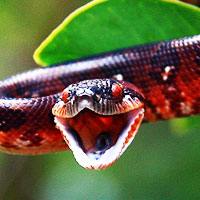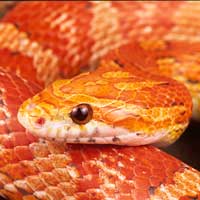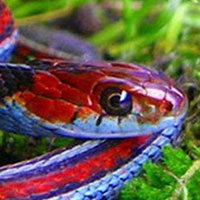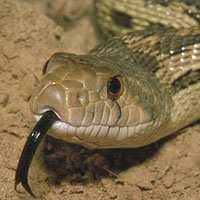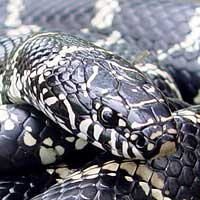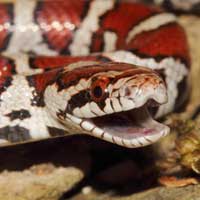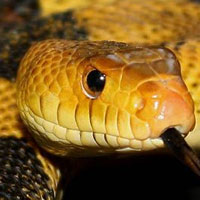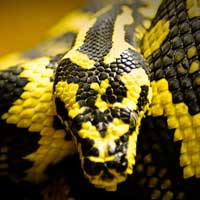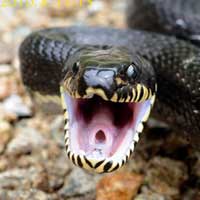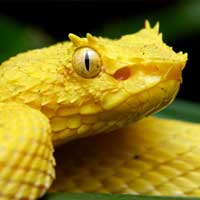South Florida Mole Kingsnake: Everything You Need to Know
The scientific name of the South Florida Mole Kingsnake is Lampropeltis rhombomaculata. It belongs to the Colubridae family, which is the largest family of snakes and includes many non-venomous and mildly venomous species.
Scientific Name: Lampropeltis rhombomaculata
Snake Family: Colubridae
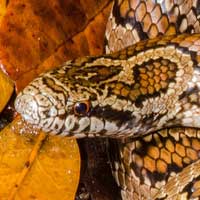
Introduction to the South Florida Mole Kingsnake
The South Florida Mole Kingsnake (Lampropeltis rhombomaculata) is a secretive and fascinating snake native to South Florida. Known for its subtle, earthy coloration and reclusive nature, this non-venomous species plays a crucial role in controlling rodent and pest populations. Its shy demeanor and unique appearance make it a hidden gem among reptile enthusiasts and herpetologists.
Where Does the South Florida Mole Kingsnake Live?
The South Florida Mole Kingsnake prefers habitats with loose, sandy soils that allow it to burrow and remain hidden. It is commonly found in the southern regions of Florida, thriving in environments that provide both cover and abundant prey.
Preferred Habitat Features:
- Open woodlands
- Scrublands
- Grasslands with sandy soils
- Suburban gardens and fields
| Region | Habitat Type | Key Features |
|---|---|---|
| Southern Florida | Woodlands | Shaded areas with sandy soil |
| Florida Scrub | Scrublands | Sparse vegetation, sandy terrain |
| Suburban Areas | Gardens and fields | Close to human activity, loose soil |
What Does the South Florida Mole Kingsnake Eat?
The South Florida Mole Kingsnake is a carnivorous predator that relies on its burrowing and hunting skills to capture prey. Its diet is primarily composed of small, subterranean creatures.
Common Diet:
- Rodents such as mice and small rats
- Lizards
- Frogs and other amphibians
- Small invertebrates
In captivity, feeding frozen-thawed rodents is recommended for convenience and safety. Juvenile snakes should be fed every 5-7 days, while adults require feeding every 10-14 days.
Behavior and Temperament of the South Florida Mole Kingsnake
The South Florida Mole Kingsnake is a shy and reclusive species. It spends much of its time burrowed underground, making it less visible compared to other kingsnake species.
Key Behavioral Traits:
- Reclusive and secretive
- Non-aggressive but may display defensive behavior when threatened
- Primarily nocturnal, becoming active at night
- Highly skilled at burrowing
With consistent handling and a stress-free environment, these snakes can adapt to captivity, though they remain less active compared to other kingsnake species.
Health and Lifespan of the South Florida Mole Kingsnake
The South Florida Mole Kingsnake is a hardy species with a lifespan of 10-15 years in captivity when provided with proper care. Regular monitoring of its health and environment is crucial to ensuring longevity.
Common Health Concerns:
- Respiratory infections from improper humidity
- Shedding issues due to low humidity
- Parasites, especially in wild-caught specimens
Maintain a temperature gradient of 75-85°F, provide clean water for hydration and soaking, and ensure a clean environment to prevent health issues. Regular veterinary check-ups are recommended.
Reproductive Traits of the South Florida Mole Kingsnake
The South Florida Mole Kingsnake is oviparous, meaning it lays eggs after mating. Breeding typically occurs in the spring, followed by egg-laying in early summer.
Reproductive Details:
- Mating season: Spring
- Clutch size: 4-10 eggs
- Incubation period: 50-70 days
- Hatchlings are independent at birth
In captivity, providing a nesting area and maintaining proper incubation temperatures (82-85°F) are essential for successful breeding and hatching.
How to Handle and Care for the South Florida Mole Kingsnake
Caring for the South Florida Mole Kingsnake involves replicating its natural burrowing environment and providing consistent, gentle handling to reduce stress.
Handling and Care Tips:
- Handle gently and infrequently to minimize stress
- Provide a deep substrate for burrowing
- Maintain proper humidity and temperature levels
- Offer a varied diet of appropriately sized prey
With the right care and environment, the South Florida Mole Kingsnake can thrive in captivity, offering a unique and rewarding experience for dedicated keepers.
Other Snakes In This Species
 Albino California Kingsnake
Albino California Kingsnake Arizona Mountain Kingsnake
Arizona Mountain Kingsnake Black Kingsnake
Black Kingsnake Brooks Kingsnake
Brooks Kingsnake California Kingsnake
California Kingsnake Desert Kingsnake
Desert Kingsnake Dot-Dash California Kingsnake
Dot-Dash California Kingsnake Durango Mountain Kingsnake
Durango Mountain Kingsnake Eastern Kingsnake
Eastern Kingsnake Florida Kingsnake
Florida Kingsnake Florida Mole Kingsnake
Florida Mole Kingsnake Goins Kingsnake
Goins Kingsnake Gray Banded Kingsnake
Gray Banded Kingsnake Mexican Black Kingsnake
Mexican Black Kingsnake Mole Kingsnake
Mole Kingsnake Prairie Kingsnake
Prairie Kingsnake Ruthvens Kingsnake
Ruthvens Kingsnake Scarlet Kingsnake
Scarlet Kingsnake Speckled Kingsnake
Speckled Kingsnake Utah Mountain Kingsnake
Utah Mountain Kingsnake Variable Kingsnake
Variable Kingsnake
